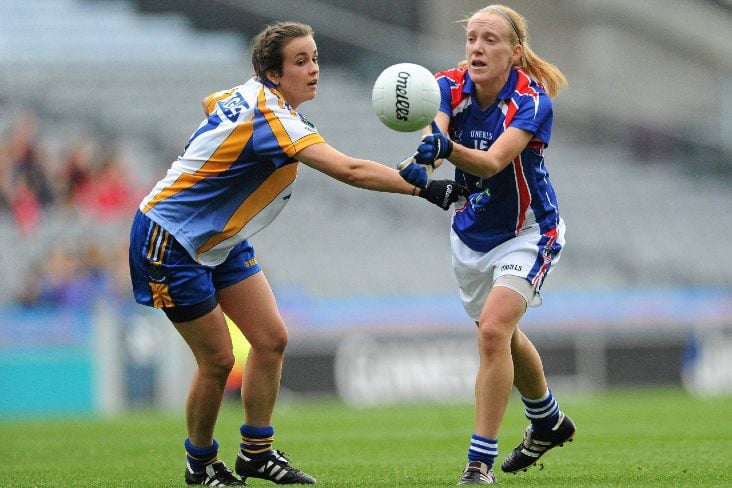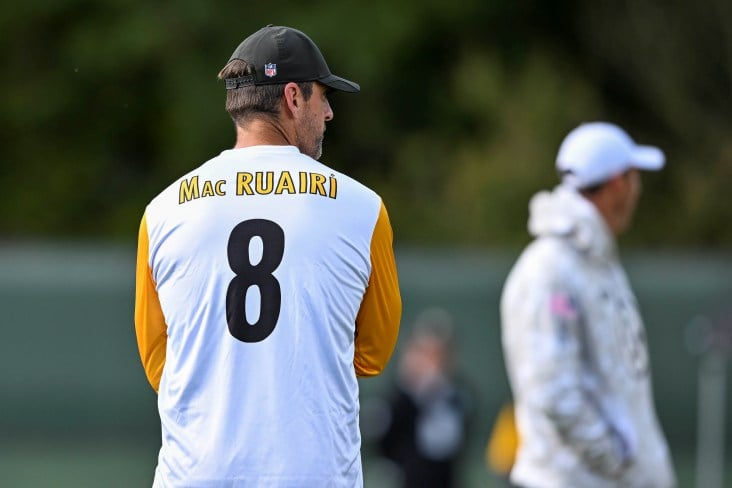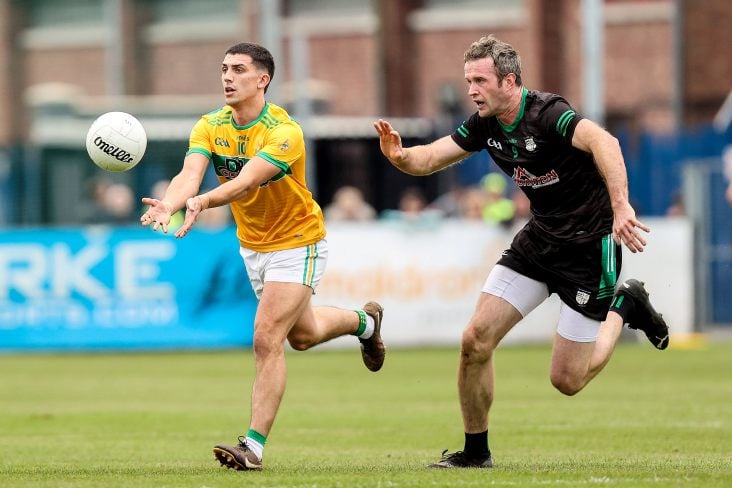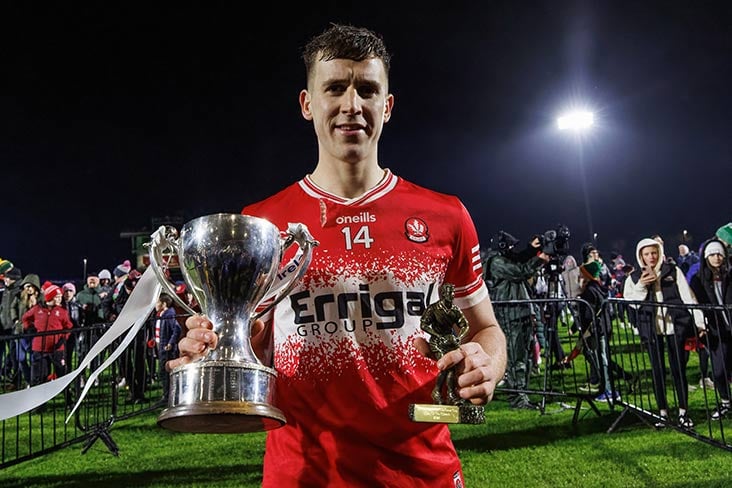This date 58 years ago: Fifteen Men Started, Same Fifteen Finished, Fifteen Different Clubs
September 24, 2025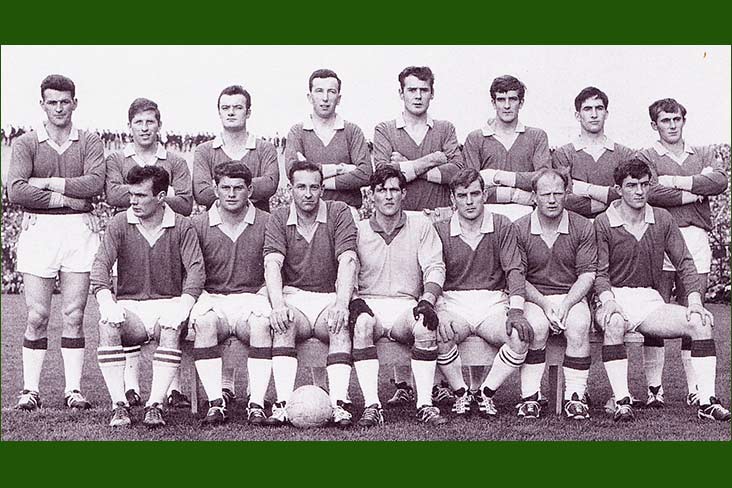
Meath All Ireland SFC champions 1967. Front l-r: Tony Brennan, Terry Kearns, Peter Darby capt, Sean McCormack, Mick White, Pat Collier, Mick Mellett. Back l-r: Bertie Cunningham, Paddy Mulvaney, Noel Curran, Peter Moore, Jack Quinn, Mattie Kerrigan, Ollie Shanley, Pat Reynolds.
On the 24th September 1967 Meath claimed their 3rd All Ireland SFC title when overcoming Cork by a goal, 1-9 to 0-9, at a packed Croke Park.
Royal County Meath Yearbook 2017 paid a glowing tribute to this very talented squad that represented the Green and Gold with great distinction.
The last line of defence – Sean McCormack.
Only one goal conceded over the entire campaign
Strong and utterly fearless, Sean is part of a great north Meath GAA family.
A graduate of the 60 minor team, he played his club football out the field and was right full back on the All Ireland junior winning team of 1962. His brothers Pat and Larry also wore the green and gold with distinction.
Son Larry likewise played in all grades for the county. Sean senior lined out in the All Ireland deciders of 66 and 70 and his shot stopping, as right through the 67 campaign, was from the top drawer.

At number two, right full back – Mick White.
The original ‘Rathkenny Revel’
If the All Stars team existed in 1967 the Rathkenny hero was a certain selection.
Clever and with a great positional sense, Mick let his football do the talking.
He provided outstanding cover for Jack Quinn during this period. The ideal corner back who read the game superbly. Many rated Mick the Man of the Match in the 67 final.
Like Sean McCormack, the Rathkenny clubman won a junior medal in 1962 and was a county minor in 59.
Manning the edge of the square, at number three – Jack Quinn.
Meath’s greatest ever full back
The best full back in the country during the second half of the 60s.
When that ball went in high around the Meath goalmouth, there was only one winner. Jack had a great pair of hands and was practically unbeatable in the air. Not only that but the Kilbride man was extremely mobile.
A colossus also at midfield, where he played all his club football. Outstanding in that position over the Leinster campaign of '64 and the best player on the pitch as Meath narrowly went under to Galway in the semi-final of that year.
He took over the full back position when his brother Martin was suspended in '66.
Another brother Gerry was also on the '67 panel.
Jack was still number three in '75 as Meath won NFL honours.
''Hard as nails'' as they say. You simply did not mess around with Jack Quinn on the field of play.
At left full back, number 4 - Peter Darby.
The leader of the pack
Equally at home on the hurling fields, Peter Darby represented the county at both codes and in all grades.
The oldest on the starting fifteen ( he had made his senior county debut way back in 1956 ) the Trim man was team captain and enjoyed the honour of mounting the steps of the Hogan Stand at the games end to collect Sam Maguire.
Originally a forward when he first came on the scene, Peter was extremely calm, on and off the ball and continually encouraged his younger colleagues through that summer of 67.
Legend has it that on a sunny day he always marked his man from the front. When asked was he not taking a risk Peter's reply was '' I always watched his shadow and knew where he was. ''
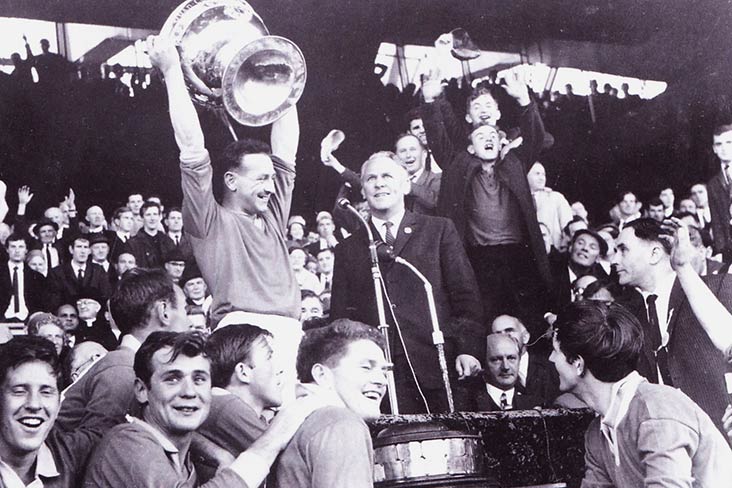
In the number 5 jersey, right half back – Pat ''Red'' Collier.
This man answered to only one name ''The Red''
Pat ''The Red'' Collier was one of the great and most colourful characters of not alone Meath GAA but the GAA world itself right through the sixties.
If Pat was playing today he could be a millionaire and a marketing dream. All those newspaper columns, shop openings, endorsing a product etc. For everybody knew or heard of the ''The Red Collier''. The crowd’s favourite.
The Stamullen star, he made his senior debut in 1961, was a tremendous right half back. Strong, tough, so reliable. Hard but fair. Master of the solo run out of a defence under siege. Was he ever off injured?
He took an all mighty wallop during the opening half of the Mayo semi-final. We all feared the worst. But moments later Pat was surging forward deep into opposition territory and his long range effort found the Western net . Meath were on their way.
One of the Cork stars was midfielder Mick Burke but let’s say he ran into ''The Red'' early in the final and big Micks '' days were numbered''.
That ripped jersey around his chest from the v neck down, the bald patch in the middle and the red hair protruding, almost wing like, on both sides as he powered forward on his merry way. We will never see the like of Pat ''The Red'' Collier again.
Manning the centre half back spot, at number 6 - Bertie Cunningham.
Another great Ballivor centre half back
What a footballing year 1967 was for Bertie Cunningham. The lynchpin of the Meath defence, the pivot, the very rock on which many an opposing attack faltered.
In footballing parlance the Ballivor six footer was immaculate throughout that long summer. Good enough for his selection as Texaco Footballer of the Year.
So solid, both on the ground and in the air and that trademark drop kick clearance, one that old timers will often hark back to.
Amazingly Bertie was the only one from an outstanding minor All Ireland crop of 1957 to make it onto the match winning 67 selection.
A number 4 as a minor, Bertie Cunningham made the vital centre half back spot his property for most of the sixties. He was there in 66 for the Galway game and back at left full for the 70 final joust with Kerry.
A wonderful defender.
At left half back, number 7 – Pat Reynolds.
Meath's very first All Star
The last piece in the jigsaw as without doubt the Meath half backline of Collier, Cunningham and Pat Reynolds was the greatest in GAA history.
Pat first burst onto the inter county scene as a raw, 18 year old teenager in 1964. All fears for his inexperience rapidly faded as he took to championship action like a duck to water.
Come Meath's exit at the hands of Galway in August, the young Reynolds was a household name throughout Meath GAA circles.
Brave and strong, the dashing Pat was to remain a Meath senior for the next eleven years. He had already lined out in that familiar number 7 jersey in the 66 final, was there again for the 70 decider and climaxed a great career in the green and gold as an experienced, father like centre half back when a very young team downed the Dubs in the NFL decider of 75.
1970 was to see Pat Reynolds at his footballing peak and his semi-final display against Galway was one of the greatest ever produced by a Meath player in Croke Park.
He was Meath's first All Star in 71, the initial year of this popular selection. Of course he was handed the number 7 shirt. In 1978 he obtained a first Meath SFC medal with his beloved Walterstown.
Son Paddy was to emulate his father both as an All-Ireland winner and as an All Star.
Pat Reynolds was later a key figure behind the scenes as a tried and trusted selector during the earlier years of Sean Boylan's reign and had a major role to play in the All Ireland wins of 87 and 88.
Years of outstanding service.
At centre field, in the number 8 shirt – Peter Moore.
Scored an outstanding goal on All Ireland semi final day and it was not picked up on television
Imagine the scene back in August 67. Matters are into the second half and Meath are struggling to get in front of a young, speedy Mayo side during their All Ireland semi-final joust. Suddenly the TV sets or maybe it was RTE go off the air. A blank black and white screen with one heck of a buzz.
Things return to normal about 5 minutes later and hey presto. Meath had jumped 8 or 9 points clear. Was it a miracle, an apparition or had RTE bungled up the score line?
No. In the midst of a huge Meath scoring burst, big Peter Moore from Ballinabrackey, in the deep south of the county, had pushed forward from his midfield berth and struck a wonder goal. If memory serves me right the late Peter kicked his effort with the intention of getting a point but somehow the ball crept in under the crossbar at the old Canal End. ''All hell broke loose'' amongst the Meath support.
The Royals were on their way to the final for the second year running and a meeting with Cork. Needless to say the Ballinabrackey man put in his usual wholesome effort on the big day.
Peter had a long striding run and was a fine fielder of the ball. Like a number of his colleagues he was the product of another big GAA family.
Only a sub with the minors of 57, the late developer was first introduced to the senior panel in 1960. Peter became a permanent fixture around the centre of the field, a position he also filled in 66 and was a substitute in 1970.
Peter Moore resided in Tullamore and was very popular amongst the Faithful GAA fraternity. During the 90's he took charge of the Offaly under 21 team, leading them to a Leinster title in 1995.
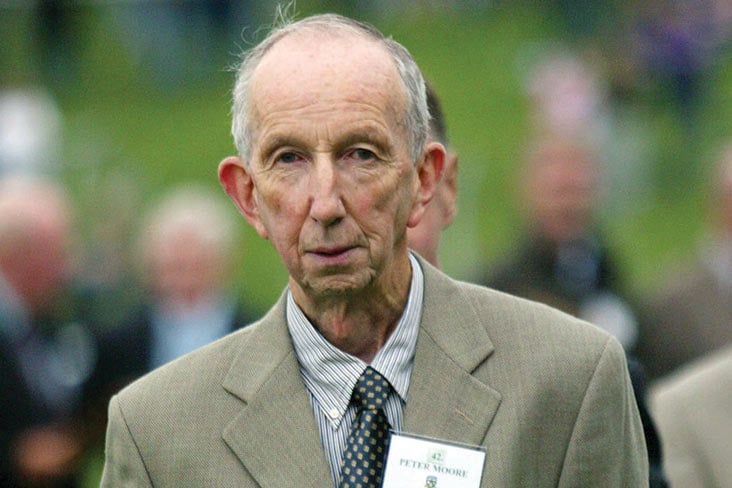
At centre field, wearing the number 9 jersey – Terry Kearns.
Top scorer in the All Ireland final
Many good judges claim that St. Vincents player Terry Kearns was their Man of the Match in the final against Cork. And who can argue.
Changed to full forward in the early stages of the second period the Ardcath man thereafter notched a tally of 1-2 and was Meath's top scorer.
Those there and thousands at home, stuck to their black and white sets, will forever remember Terry getting on the end of a Mattie Kerrigan centre and his overhead flick, past the despairing arms of keeper Billy Morgan, to the back of the Cork net.
Ten minutes into the second half and this was the games big turning point.
Terry may not have been the tallest on the team but he had a magnificent leap and that eye for a score. Such was his versatility that when Meath next played on All Ireland day versus Kerry in 70 he manned the vital centre half back position.
Terry Kearns with his brothers back boned the fine St Vincents team of this era. His name is secure in the annals of Meath GAA.
Right half forward, on the wing, number 10 – Tony Brennan.
''It’s Brennan on the Moor''.
No it’s Brennan on the ball
The Enfield man had a left foot which resembled a cannonball and was usually Meath's top scorer.
During the late 60's Tony Brennan was amongst the leading wing forwards in the country. In 67 he ended the championship with a scoring tally of 1-13, just behind Noel Curran who shot 2-11.
His 0-4 against Offaly in the Leinster final, a low scoring clash of 0-8 to 0-6 in favour of the Royals, was to prove invaluable.
Indeed Tony had a terrific record against the Midlanders. Three years later, in that most talked about provincial decider where Meath triumphed over Offaly, 2-22 against 5-12, he shot 0-10.
He was later to knock over 5 points versus Kerry in that year’s final.
1970 saw Tony Brennan at his peak and he ended up as the top scorer in the entire championship with a grand total of 0-33. Unfortunately for him the All Stars only came into existence the following year.
Besides Enfield, Tony (he also pulled on the number 10 jersey in 66 against Galway) played club football in Monaghan with Castleblayney Faughs and later transferred back to Dunderry. He was involved with Dunderry under age teams during the late 70's and later was the man in charge when the Black and Whites scooped their only Meath SFC in 1995.
As a selector he was a key member of Sean Boylan's staff when Meath gained every honour possible during the late eighties and early nineties.
At centre half forward, on the forty and wearing the number 11 jersey – Mattie Kerrigan.
Did not make his senior inter county debut until he was 24 years of age
A lesson to all young footballers with dreams of lining out for their county. Mattie Kerrigan never played minor for Meath. The Royals did not enter the Leinster under 21 competition during the mid-sixties and he was all of 24 years old when he first wore the green and gold at senior competitive level. The occasion, a NFL game against Louth in late 1965.
The motto has to be '' keep trying'' as Mattie went on to become one of the most decorated Meath players of all time.
A real clever attack leader, he led the line superbly. Adept at winning possession, he added a vital ingredient to the Meath attack, one that was missing in 66.
He also had that ability to revert to midfield when Meath were under pressure in that sector, a la that 67 decider when it was his centre that found Terry Kearns lurking on the edge of the square for the all-important goal. Just minutes earlier the pair had switched positions.
Mattie went on to inspire Summerhill to their famous four-in-a-row of Meath SFC wins from 1974 to ‘77. Who will ever forget his cheeky, back heeled goal into the Hospital End in Navan as Seneschalstown were beaten in the replayed final of ‘77.
Later that year the Hill hammered famed St. Vincents to take Leinster provincial honours.
Mattie continued to represent his county right into the seventies. He was there again on the forty in ‘70 and was a goal scoring corner forward as a late rally pipped the Dubs in the NFL decider of 1975. Later that year he received a coveted All Star award.
In a sparkling inter county management career MK took charge of the Meath seniors, guided the minors and under 21's to a number of Leinster trophies and had success managing both the Westmeath and Cavan seniors.
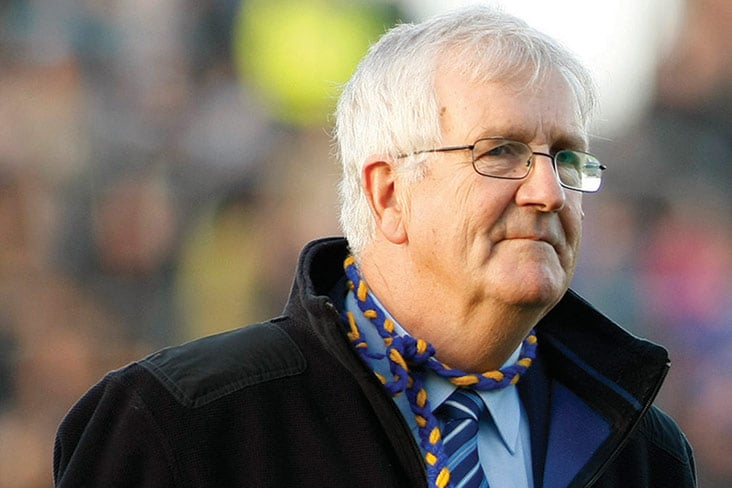
On the left, in the number 12 jersey - Mick Mellett.
The man from Martinstown
Mick Mellett rarely grabbed the big headlines but he had a vital role to play on the great Meath team of 1966-70.
The Martinstown man went about his work in a quiet, yet very efficient way. Mick as they say always ''worked his socks off'' and regularly chipped in with vital scores.
Those two long range points in the the second half of the 67 final with Cork pressing hard were so vital.
Mick, born in Connemara, came to live in the Rathcairn area at the age of 10. The Mellett or O Mealoid family are heavily immersed in traditional music, culture and of course GAA.
Mick and his brothers back boned the Martinstown team of that era and Meath junior club honours arrived in 1969. The Athboy parish team competed at intermediate level during the early seventies.
And yes for younger readers there was a team called Martinstown who later amalgamated with their parish rivals to become Martinstown/Athboy. The club also had associations with the An Gaeltacht club in Rathcairn.
Mick Mellett made his senior debut for Meath against Kerry in a NFL game at the tail end of 1966. He was a useful hurler to boot and played for the county in a number of underage grades and at both codes.
At top of the right, in the number 13 jersey, right full forward - Paddy Mulvany.
Our only scorer during the opening half of the All Ireland decider
A Meath All Ireland winning team team without a Skryne representative would be a strange commodity. The lightning fast Paddy Mulvany, of the left foot, answered the call in 67.
A goal scorer when coming on as a substitute in the 1964 Leinster final win over Dublin, he was a sub for the 66 All Ireland.
Paddy, equally at home as a half back, was amongst the bravest of the brave, often putting his body on the line for club and county.
To him fell the honour of notching the Royals first score of the 67 final. And what an important, morale boosting point it was to prove.
Picture the scene. As in 66, the Cork final was dominated by strong winds. Meath, by accident or design, played against the elements in the opening half of both finals. It blew from the Hill 16 end in 66 and into the Hill 12 months later.
That first half in 66 was a disastrous one for the warm favourites. On the 26th minute Murty O’Sullivan pointed a free as Meath retired, 1-6 to 0-1, in arrears at the interval.
Ironically at almost the same time Mulvany got Meath off the mark for the first score of the 67 decider. This time the wind was even stronger, but Meath had played significantly better and had only a 0-4 to 0-1 margin to overcome. Paddy's score, four minutes from the break, was just the half time tonic Meath required. He went on to add another point in the second half.
A substitute on the All Ireland winning junior team of 1962, Paddy Mulvany first shot to prominence as an under 16 player on the emerging Skryne senior team of 1956.
A county minor in 58 he made the Meath senior squad the following year.
Paddy was a regular as the Blues fought it out with fierce rivals Navan O Mahonys for the kingship of Meath football during the late fifties/early sixties. After many near misses the Keegan Cup eventually climbed the hill to Skryne in 65.
He was also an accomplished hurler and won numerous awards with Kilmessan.
On the edge of the square, in the number 14 shirt, full forward - Noel Curran.
Hit the highest individual tally of the entire championship
So solid under the dropping ball on the edge of the square, at a time when opposing full backs were inclined ''to take man and all'', he ended the campaign as Meath's top scorer and Noel did not take frees.
The late Noel Curran struck for 2-11 over the course of the championship (Meath played 5 matches), 2-5 of which came in the opening round versus Louth. Indeed this scoring burst against the Wee County was the highest individual tally of the entire championship.
His two second half points on final day proved invaluable.
The punched score was Noel's speciality while he perfected the art of successfully kicking overhead for a point with his back to the opposing goals.
Noel Curran was also at number 14 in the previous year’s final against Galway and in the semi-final romp over Down he notched five second half points.
He played the majority of his club football with Dunshaughlin, winning a junior medal with the Black and Amber in 67 and operating in his favourite full forward position shot over 6 points as Nobber were overcome in the Meath intermediate final of 77.
Later Noel joined Dublin club Thomas Davis and represented the Tallaght side at intermediate level while well into his forties.
Noel's son Paul, of Dublin fame, was one of the greatest wing half backs in the history of the GAA. He won an All-Ireland medal in 1995 and was voted Texaco Footballer of the Year that same season.
Paul is the proud holder of 2 NFL titles, 6 Leinster SFC's, 3 All Stars and 3 Dublin SFC medals won with Thomas Davis.
At top of the left, wearing the number 15 jersey, - Ollie Shanley.
Duleek dynamo was Meath's most consistent player, 1964-70
Ollie Shanley was a regular and vital component of the great Meath team during the latter part of the sixties and scooped provincial medals in 64, 66, 67 and 70.
Nowadays the words '' a roving corner forward '' is a much used term. But perhaps Ollie was the original holder of this title.
As Meath battled against the first half elements in the 67 All Ireland decider, Ollie foraged and roamed far and wide in an attempt to halt the Cork onslaught. This role, in the days when it was 15 men in their position against another 15, was to prove so effective and had a major bearing on the Rebels only mustering four opening half points.
But the Duleek native could also play and besides being an excellent link player, shot some excellent and vital scores during this wonderful run. He was Mr Consistency itself with a terrific engine.
Ollie Shanley could also lay claim to being the most versatile of that Meath squad. And by 1970 he reverted back to man the troublesome right half back position with aplomb.
He later moved clubs from Duleek to Trim and wound up his active GAA days as a member of the Simonstown club for whom his three sons, Adrian, Michael and James enjoyed many under age successes.
Ollie Shanley coached a number of clubs and was in charge of the fine Meath minor team which contested the 1977 All Ireland minor final.
A magnificent footballer and a real gentleman.
And the dedicated men who completed the panel right through a busy summer.
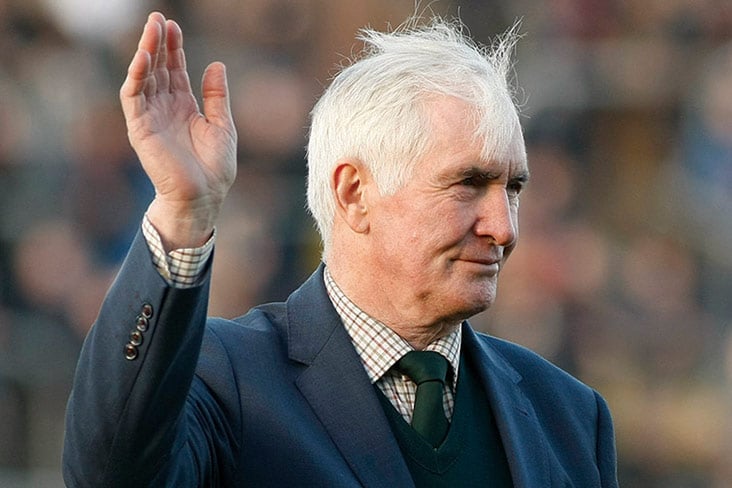
Paddy Cromwell (Skryne)
From a great Skryne GAA family. Paddy's brother Colum (sadly both are deceased) was a magnificent chairman and representative of Meath County Board.
Paddy played most of his club football (usually in the full back line) out the field for his beloved Skryne.
A Colleges' star with St Finians in Mullingar, he was the Meath keeper as Leinster honours were gained in 1964. He had one mighty drive of a dead ball and no doubt his tremendous kick out was one of the main reasons behind his selection in the county goals.
Paddy acted as Sean McCormack's deputy in 1966 and 67.
Davy Carty (Skryne)
So similar a career and background to the aforementioned Paddy Cromwell. Davy was from another great Skryne GAA family.
A boy wonder in the juvenile and minor ranks, David Carty was one of the finest wing half forwards to don the green and gold. Making his senior inter county debut in 1961, he was a star as Dublin were overwhelmed in the 64 provincial decider and captained Meath in the ill- fated 1966 final against Galway.
Fast and accurate, a dip in form saw him lose his place in early 67 but Davy remained a vital part of the set up and starred in the 68 tour of Australia.
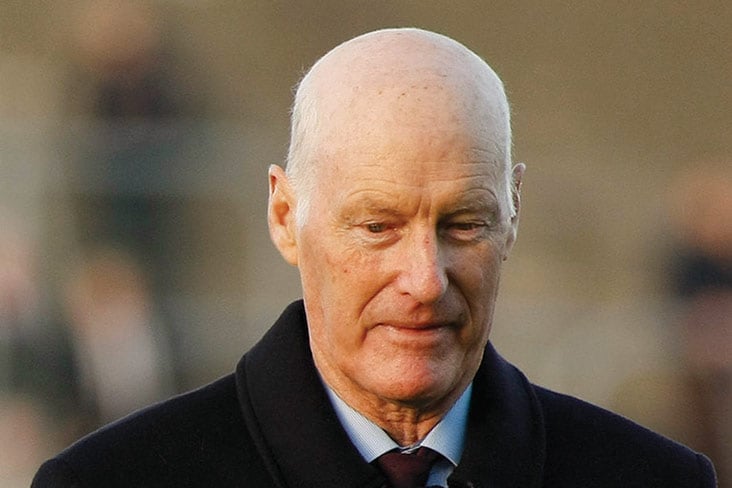
The Quinns - Martin and Gerry (Kilbride)
The mighty Martin was a regular on the edge of the Meath square for years. He and his brothers back boned the great Kilbride team of the sixties/ early seventies and with Martin's introduction in the 1966 All Ireland decider we had the spectacle of three Quinn brothers lining out for their county on the GAA's greatest day.
Martin came in at full back, allowing Jack move out to midfield while Gerry had already started at right full forward. Martin Quinn was a star of the 1964 Leinster final demolition of defending champions Dublin and would have been a certain starter in 66 only for events 12 months earlier.
He continued a very close involvement with the Meath county team over the years since.
Gerry was an outstanding right full forward with a great eye for goal. An able substitute in 67, he wore the number 13 in the 66 loss to Galway and was outstanding against Down in the semi-final the previous month as his brace of goals played a major part in downing the Mournes.
Gerry also lined out against the Dubs in the 1964 Leinster decider.
Just picture the back drop to that provincial decider as remembered by a nine year old boy.
Dublin were the All Ireland champions. Before throw in rumours spread amongst the huge Meath contingent that the Quinn's father (remember that three of his sons were playing) had sadly passed away the night before. In other words the Quinn's would not be available. Imagine the relief when Martin, Jack and Gerry all ran out onto the Croke Park sod.
Mr. Quinn senior was indeed gravely ill, he was anointed on the Saturday night and sadly died the following Wednesday. However he insisted that the boys lined out for their county. Needless to say all three played a starring role.
The stuff of legends, loyalty to the cause, love for a father, how important the Quinns were to Meath. Enough to bring a tear to the eye.
Continuing the huge Kilbride contribution. The two Pat’s, Rooney and Bruton and sharp shooting Murty Sullivan.
Indeed Pat Rooney could be classed as the unlucky man of the ‘67 campaign. He had a terrific game in his midfield berth against Louth in the opening round at Croke Park. But a broken wrist thereafter curtailed his involvement.
Pat Bruton was known as an accomplished left half or left full forward on the Meath club circuit. Needless to say both provided invaluable service to Kilbride and have a number of Keegan Cup medals on their CV's.
Murty Sullivan was undoubtedly the most potent attacker of that great Kilbride team. He was also Meaths top scorer through the 66 championship campaign.
Murty notched 0-3 against Wexford, 0-2 versus Westmeath, 0-5 against Kildare in the Leinster final, 0-4 in the semi final victory over Down and 0-2 during the Galway final. A grand total of 0-16 over the 5 games.
The 66 attack leader had the distinction of lining out for the county minors three years running, 1953 to 55 and came on as a sub during the 67 Leinster final win over Offaly.
Later on he was to produce some outstanding displays on the tour of Australia and with all his aforementioned Kilbride team mates played a lead role as further glory arrived for the Dublin border outfit.
Austin Lyons (Summerhill)
Austin was the first member of that great south Meath GAA dynasty to make the headlines. While still a teenager he was introduced as a substitute for the braveheart 'Red' Collier during the closing stages of the All-Ireland semi-final victory over Mayo. Pat was forced to retire injured.
Austin disappeared from the scene for a spell but later emerged as a key figure on the great Summerhill side of the mid-seventies.
A versatile and skilful player, Austin was the first Hill man to get his hands on the Keegan Cup as captain of 1974 side who pipped Bohermeen in the final.
Ollie Geraghty (Seneschalstown)
What a contribution the big Mattock Rangers man was to make to Meath football. On returning from England, Ollie settled within the Seneschalstown catchment area and immediately offered his services to the emerging Yellow Furze club.
His ability soon caught the attention of the Meath selectors and he became a vital part of the 67 squad, coming on as a sub in the Leinster final win over Offaly.
Ollie disappeared from the county scene for a spell but his super displays in the middle of the field right through 1972 for first time county champions Seneschalstown had heads talking. He was re-introduced to the Meath team and at the age of 33 captained the Royals to the 1973 Leinster decider.
Safe to say that there was no better footballer on the Meath club scene during the early seventies than the big, blond, high fielding, Collon native. He was was still lining out for the Seneschalstown juniors while very near the fifty year mark.
Jimmy Walsh (Drumree)
How sad to see Jimmy passing to his eternal reward just days after the Men of ‘67 were honoured in the September gone. And just like his fellow wing forward Davy Carty we did not see the best of the Drumree flier in ‘67.
Meath would not have won the Leinster championship of 1964 without Jimmy and his total of 0-20 over that campaign’s four games made him the Royals top scorer.
He was at his majestic best against a fine Louth side in the semi-final and his seven points proved invaluable in a 1-12 to 2-7 victory. He had earlier kicked 0-4 in the opening round win over Kildare, later on 0-4 against the Dubs in the final and 0-5 in the All Ireland semi-final loss to Galway.
Full of tricks, possessing a dummy to beat the best of defenders allied to a fine strike of the ball, Jimmy Walsh was a man of many talents. He was equally at home on the hurling fields, be it with Kilmessan and later on Dunshaughlin.
Peter Black (Bellewstown)
Peter was a valued member of the Meath squad through most of the sixties.
The man from the Hill was a county minor in 1960 and two years later was introduced as a substitute as the Royals scooped the All Ireland junior title.
Peter was a terrific fielder of the ball and could operate in a number of central positions.
He started at full forward for the opening round of the Leinster championship in 68 but sadly for Peter and Meath, a fine Longford team proved much better on the day.
In later times Peter moved to Navan and through his work in the Ardboyne Hotel was an excellent late night host for all GAA lovers who frequented the venue.
Michael 'Mick' O’Brien (Walterstown)
The Walterstown clubman lined out at right corner-forward throughout the 1967 Leinster campaign, scoring a point against Westmeath in the provincial semi-final but lost his place to Paddy Mulvany for the All Ireland semi against Mayo and final versus Cork.
He had a short but successful inter-county career, winning Leinster JFC medals in 1962 and ’64 and was also a member of the senior panel for the 1966 provincial success.
Mick was one of four players to feature in all four games against the Australians and scored two goals on the ground-breaking tour.
He later made a name for himself as a coach and guided the Royal County to NFL honours in 1975 and his club to unprecedented success at county and provincial levels in the late seventies and early eighties.
At county junior level he led Meath to a number of provincial titles and an All-Ireland win in 1988.
Michael represented the Royal County on Leinster Council for 15 years and is currently an Honorary President of Meath GAA.
A noted historian, he has compiled Walterstown GFC’s history book, 'Perseverance Brings Success’ as well as 'The Struggle for Pairc Tailteann' and the 'Loyal and Royal' Meath GAA county volume.
Fifteen Men Started, Same Fifteen Finished, Fifteen Different Clubs.
Route To Glory:
Leinster Quarter Final: Meath: 2-9 Louth: 0-3
Leinster Semi Final: Meath: 0-12 Louth: 0-6
Leinster Final: Meath: 0-8 Offaly: 0-6
All Ireland Semi Final: Meath: 3-14 Mayo: 1-14
All Ireland Final: Meath: 1-9 Cork: 0-9
Not Forgetting the Meath Selection Committee.
Chairman: Fr. Tully, Secretary: Liam Creavin, Peter McDermott, Jack Fitzgerald, Mattie Gilsenan, Kevin McConnell, Paddy Everard
Tweet